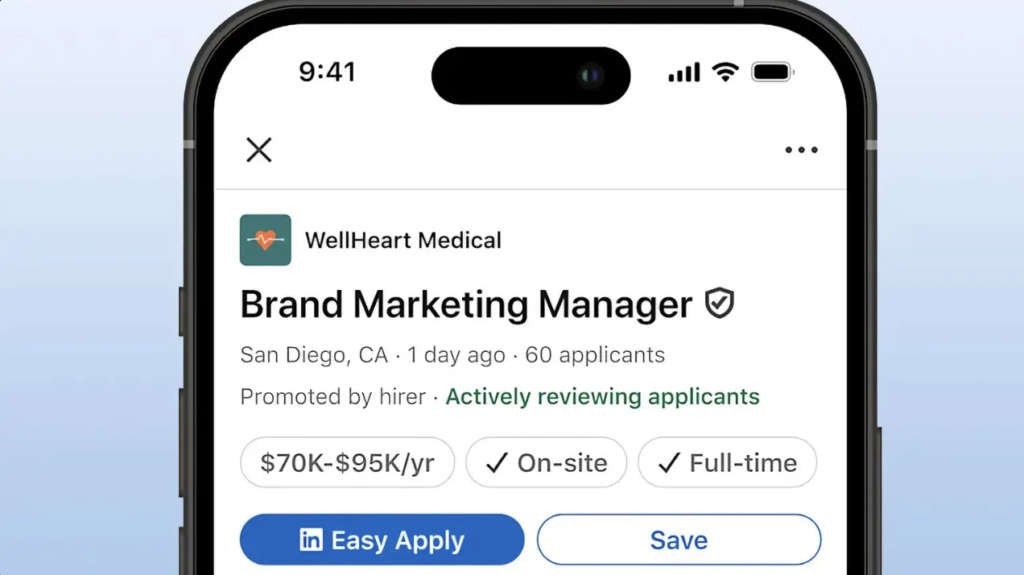
Author: Akshat Kapoor is an accomplished technology leader and the Director of Product Line Management at Alcatel-Lucent Enterprise, with over 20 years of experience in product strategy and cloud-native design.
In today’s hyper-connected enterprises—where cloud applications, real-time collaboration and mission-critical services all depend on robust Ethernet switching—waiting for failures to occur simply is no longer tenable. Traditional, reactive maintenance models detect switch faults only after packet loss, throughput degradation or complete device failure. By then, customers have already been affected, SLAs breached and costly emergency fixes mobilized. Predictive maintenance for Ethernet switching offers a fundamentally different approach: by continuously harvesting switch-specific telemetry and applying advanced analytics, organizations can forecast impending faults, automate low-impact remediation and dramatically improve network availability.
Executive Summary
This white paper explores how predictive maintenance transforms Ethernet switching from a break-fix paradigm into a proactive, data-driven discipline. We begin by outlining the hidden costs and operational challenges of reactive maintenance, then describe the telemetry, analytics and automation components that underpin a predictive framework. We’ll then delve into the machine-learning lifecycle that powers these capabilities—framing the problem, preparing and extracting features from data, training and validating models—before examining advanced AI architectures for fault diagnosis, an autonomic control framework for rule discovery, real-world benefits, deployment considerations and the path toward fully self-healing fabrics.
The Cost of Reactive Switching Operations
Even brief interruptions at the leaf-spine fabric level can cascade across data centers and campus networks:
- Direct financial impact
A single top-of-rack switch outage can incur tens of thousands of pounds in lost revenue, SLA credits and emergency support. - Operational overhead
Manual troubleshooting and unscheduled truck rolls divert engineering resources from strategic projects. - Brand and productivity erosion
Repeated or prolonged service hiccups undermine user confidence and degrade workforce efficiency.
Reactive workflows also struggle to keep pace with modern switching architectures with high speed networks, multivendor, multi-os environments and overlay fabrics (VXLAN-EVPN, SD_WAN) obscuring the root causes.
By the time alarms trigger, engineers may face thousands of error counters, interface statistics and protocol logs—without clear guidance on where to begin.
A Predictive Maintenance Framework
Predictive switching maintenance reverses the order of events: it first analyzes subtle deviations in switch behavior, then issues alerts or automates remediation before packet loss materializes. A robust framework comprises four pillars:
1. Comprehensive Telemetry Collection
– Physical-layer metrics: per-port CRC/FEC error counts; optical power, temperature and eye-diagram statistics for SFP/SFP28/SFP56 transceivers; power-supply voltages and currents.
– ASIC and fabric health: queue-depth and drop-statistics per line card; ASIC-temperature and control-plane CPU/memory utilization; oversubscription and arbitration stalls.
– Control-plane indicators: BGP route-flap counters; OSPF/IS-IS adjacency timers and hello-loss counts; LLDP neighbor timeouts.
– Application-level signals: NetFlow/sFlow micro-burst detection; per-VLAN or per-VXLAN-segment flow duration and volume patterns.
Real-time streams and historical archives feed into a centralized feature store, enabling models to learn seasonal patterns, rare events and gradual drifts.
2. Machine-Learning Lifecycle for Networking
Building an effective predictive engine follows a structured ML workflow—crucial to avoid ad-hoc or one-off models. This lifecycle comprises: framing the problem, preparing data, extracting features, training and using the model, then feeding back for continuous improvement .
- Frame the problem: Define whether the goal is classification (e.g., fault/no-fault), regression (time-to-failure), clustering (anomaly grouping) or forecasting (traffic volume prediction).
- Prepare data: Ingest both offline (historical fault logs, configuration snapshots) and online (real-time telemetry) sources: flow data, packet captures, syslogs, device configurations and topology maps.
- Feature extraction: Compute statistical summaries—packet-size variance, flow durations, retransmission rates, TCP window-size distributions—and filter out redundant metrics.
- Train and validate models: Split data (commonly 70/30) for training and testing. Experiment with supervised algorithms (Random Forests, gradient-boosted trees, LSTM neural nets) and unsupervised methods (autoencoders, clustering). Evaluate performance via precision, recall and F1 scores.
- Deploy and monitor: Integrate models into streaming platforms for real-time inference and establish MLOps pipelines to retrain models on schedule or when topology changes occur, preventing drift.
3. Validation & Continuous Improvement
– Pilot deployments: A/B testing in controlled segments (e.g., an isolated VLAN or edge cluster) validates model accuracy against live events.
– Feedback loops: NOC and field engineers annotate false positives and missed detections, driving iterative retraining.
– MLOps integration: Automated pipelines retrain models monthly or after major topology changes, monitor for drift, and redeploy updated versions with minimal disruption.
4. Automated Remediation
– Context-rich alerts: When confidence thresholds are met, detailed notifications pinpoint affected ports, line cards or ASIC components, and recommend low-impact maintenance windows.
– Closed-loop actions: Integration with SD-WAN or EVPN controllers can automatically redirect traffic away from at-risk switches, throttle elephant flows, shift VLAN trunks to redundant uplinks or apply safe hot-patches during off-peak hours.
– Escalation paths: For scenarios outside modelled cases or persistent issues, the platform escalates to on-call teams with enriched telemetry and root-cause insights, accelerating manual resolution.
Advanced AI Architectures for Fault Diagnosis
While traditional predictive maintenance often relies on time-series forecasting or anomaly detection alone, modern fault-management platforms benefit from hybrid AI systems that blend probabilistic and symbolic reasoning:
- Alarm filtering & correlation
Neural networks and Bayesian belief networks ingest streams of physical- and control-plane alarms, learning to compress, count, suppress or generalize noisy event patterns into high-level fault indicators. - Fault identification via case-based reasoning
Once correlated alarms suggest a probable fault category, a case-based reasoning engine retrieves similar past “cases,” adapts their corrective steps to the current context, and iteratively refines its diagnosis—all without brittle rule sets . - Hybrid control loop
This two-stage approach—probabilistic correlation followed by symbolic diagnosis—yields greater robustness and adaptability than either method alone. New fault outcomes enrich the case library, while retraining pipelines update the neural or Bayesian models as the fabric evolves.
Real-World Benefits
Organizations that have adopted predictive switching maintenance report tangible improvements:
- Up to 50 percent reduction in unplanned downtime through pre-emptive traffic steering and targeted interventions.
- 80 percent faster mean-time-to-repair (MTTR), thanks to enriched diagnostics and precise root-cause guidance.
- Streamlined operations, with fewer emergency truck rolls and lower incident-management overhead.
- Enhanced SLA performance, enabling “five-nines” (99.999 percent) availability that would otherwise require significant hardware redundancies.
Deployment Considerations
Transitioning to predictive maintenance requires careful planning:
- Data normalization
– Consolidate telemetry formats across switch vendors and OS versions.
– Leverage streaming telemetry protocols (gNMI, OpenConfig, InfluxDB) to reduce polling overhead. - Stakeholder engagement
– Demonstrate quick wins (e.g., detecting degrading optics) in pilot phases to build trust.
– Train NOC teams on new alert semantics and automation workflows. - Scalability & architecture
– Use cloud-native ML platforms or on-prem GPU clusters to process terabytes of telemetry without impacting production controllers.
– Implement a feature-store layer that supports low-latency lookups for real-time inference. - Security & compliance
– Secure telemetry streams with encryption and role-based access controls.
– Ensure data retention policies meet regulatory requirements.
Toward Self-Healing Fabrics
Autonomic Framework & Rule Discovery
By embedding predictive analytics, hybrid AI architectures and an autonomic control framework at the switch level, organizations lay the groundwork for networks that not only warn of problems, but actively heal themselves—ensuring uninterrupted service, lower operational costs and greater agility in an ever-more demanding digital landscape.
To achieve true self-healing fabrics, predictive maintenance must operate within an autonomic manager—a control-loop component that senses, analyzes, plans and acts upon switch telemetry:
- Monitor & Analyze
Streaming telemetry feeds are correlated into higher-order events via six transformations (compression, suppression, count, Boolean patterns, generalization, specialization). Visualization tools and data-mining algorithms work in concert to surface candidate correlations . - Plan & Execute
Confirmed correlations drive decision logic: high-confidence predictions trigger SD-WAN or EVPN reroutes, firmware patches or operator advisories, while novel alarm patterns feed back into the rule-discovery lifecycle. - Three-Tier Rule-Discovery
– Tier 1 (Visualization): Human experts use Gantt-chart views of alarm lifespans to spot recurring patterns.
– Tier 2 (Knowledge Acquisition): Domain specialists codify and annotate these patterns into reusable correlation rules.
– Tier 3 (Data Mining): Automated mining uncovers less obvious correlations, which experts then validate or refine—all maintained in a unified rule repository .
Embedding this autonomic architecture at the switch level ensures the predictive maintenance engine adapts to new hardware, topologies and traffic behaviours without manual re-engineering.
Predictive maintenance for Ethernet switching is a key stepping stone toward fully autonomic networks. Future enhancements include:
- Business-aware traffic steering
Models that incorporate application-level SLAs (e.g., voice quality, transaction latency) to prioritize remediation actions where they matter most. - Intent-based orchestration
Declarative frameworks in which operators specify high-level objectives (“maintain sub-millisecond latency for video calls”), and the network dynamically configures leaf-spine fabrics to meet those goals. - Cross-domain integration
Unified intelligence spanning switches, routers, firewalls and wireless controllers, enabling end-to-end resilience optimizations.
By embedding predictive analytics and automation at the switch level—supported by a rigorous machine-learning lifecycle—organizations lay the groundwork for networks that not only warn of problems but actively heal themselves. The result is uninterrupted service, lower operational costs and greater agility in an ever-more demanding digital landscape.
References
· S. Iyer, “Predicting Network Behavior with Machine Learning,” Proceedings of the IEEE Network Operations and Management Symposium, June 2019
· Infraon, “Best Ways to Predict and Prevent Network Outages with AIOps,” 2024
· Infraon, “Top 5 AI Network Monitoring Use Cases and Real-Life Examples in ’24,” 2024
· “Predicting Network Failures with AI Techniques,” White Paper, 2024
· Denise W. Gürer, Irfan Khan, Richard Ogier, An Artificial Intelligence Approach to Network Fault Management


